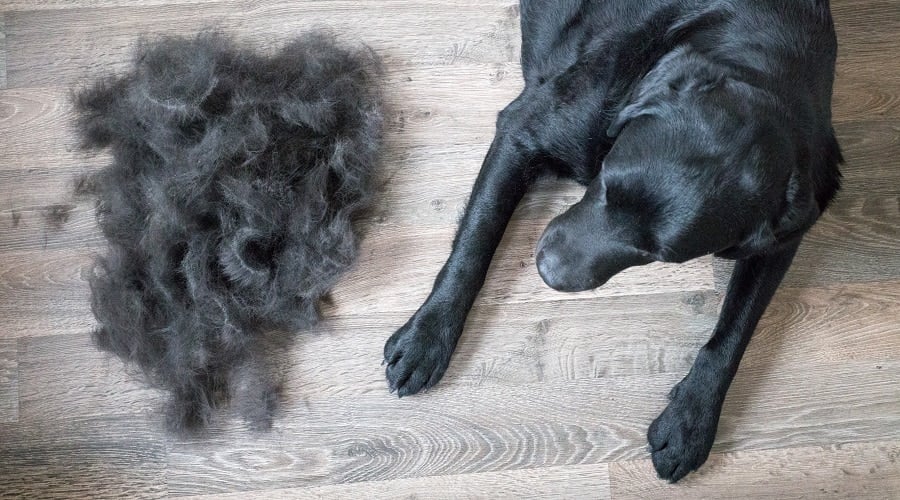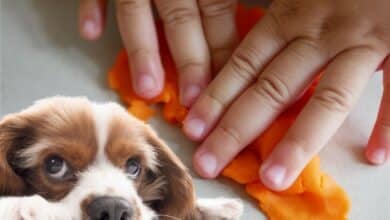Oh No! My Dog Just Ate Hyacinths! Are Hyacinths Poisonous To Dogs?
When you purchase through links on our site, we may earn a commission. Here’s how it works.
After a long winter, nothing quite says “spring!” like the splash of color that comes with the eruption of petunias, roses, and hyacinths in our gardens. But what happens when your dog decides they would rather eat these flowers than smell them?
Table of Contents
Hyacinths are bulb plants, usually planted in early fall. They are particularly beloved by gardeners because they come in so many vibrant colors and are relatively easy to look after. This being said, they can also be popular with some dogs. Some pups seem to enjoy digging out the bulbs or chewing on the leaves and flowers.
So, are hyacinths poisonous to dogs? Are they toxic, and do I need to worry? The short answer is yes, hyacinths can be dangerous to our canine companions. Continue on to find out what to expect.
Are Hyacinths Poisonous to Dogs?
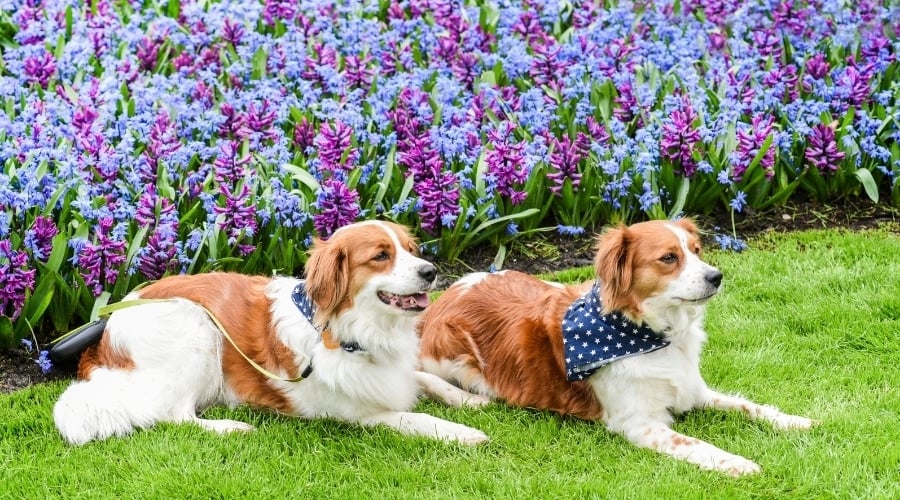
The short answer is yes, hyacinths are toxic for dogs when eaten or chewed on. This being said, the symptoms will depend on several factors. And how quickly you respond, can also determine your dog’s reaction to these particular plants.
Their toxicity will depend on which part of the plant was eaten, how much, and whether the dog is particularly sensitive, or has been previously sensitized to, some of the compounds naturally present in hyacinth plants. The entire plant is toxic, but the bulb is the most concentrated, so it will usually cause the most problems.
Why Are Hyacinths Poisonous?
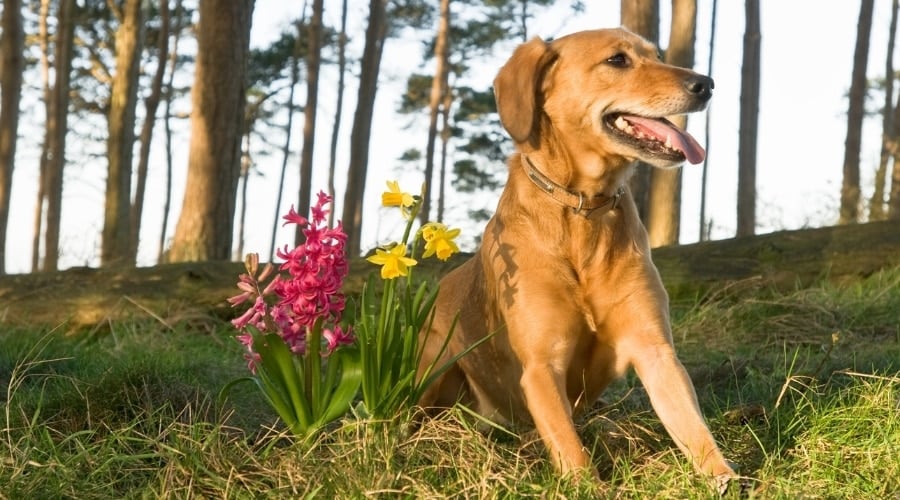
For those of us interested in the nitty-gritty, hyacinths contain two types of substances that are toxic for dogs in different ways when eaten: tuliposides A and B, and calcium oxalate crystals.
Tuliposides are what we call “allergenic lactones.” They are plant-derived chemicals naturally present in certain bulb plants, and as their name suggests, can cause allergic reactions when touched by people, or in this instance, when eaten or chewed by a dog.
Calcium oxalate crystals, on the other hand, are a bio-mineral present in many plant species. To put it simply, even though they are microscopic, they are very sharp and painful to chew on. They are part of how certain plants protect themselves from being eaten by grazers. And these crystals have the same effect when an over-enthusiastic dog decides to chew on them too!
Symptoms of Hyacinth Poisoning
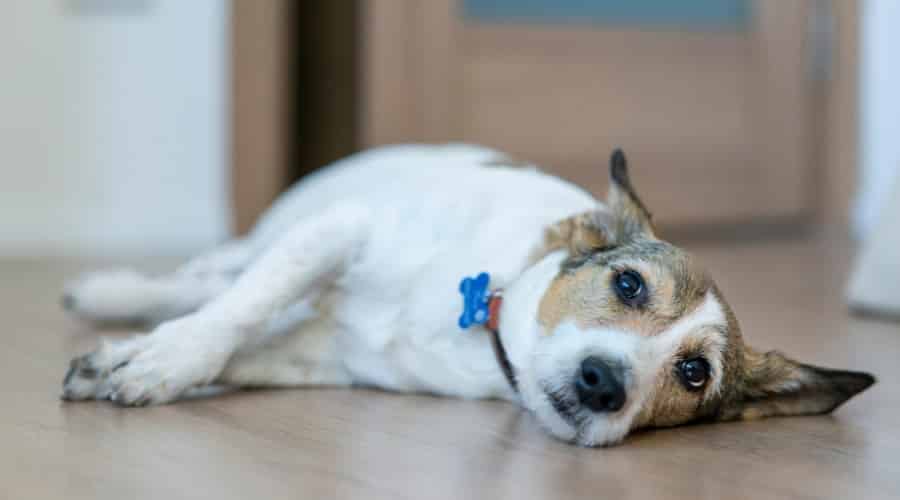
One of the main symptoms a dog will show after chewing on a hyacinth plant is profuse drooling, which is caused by irritation of the mouth and sometimes the esophagus (food pipe). He may also be acting quiet and lethargic, rubbing his face and mouth, or finding it hard to settle.
In more severe cases, eating hyacinths can also lead to vomiting and diarrhea as well, occasionally with blood when the case is severe.
A lot rarer, but still reported, is when a dog eats a larger amount of bulbs. The toxins are most concentrated in the bulbs, and this can lead to serious heart and breathing problems, which can be life-threatening.
Another thing to keep in mind is if a dog eats the hyacinth bulbs whole without enough chewing, this can lead to a blockage in his gastrointestinal tract, even a few days down the road.
My Dog Ate a Hyacinth Plant: What Now?
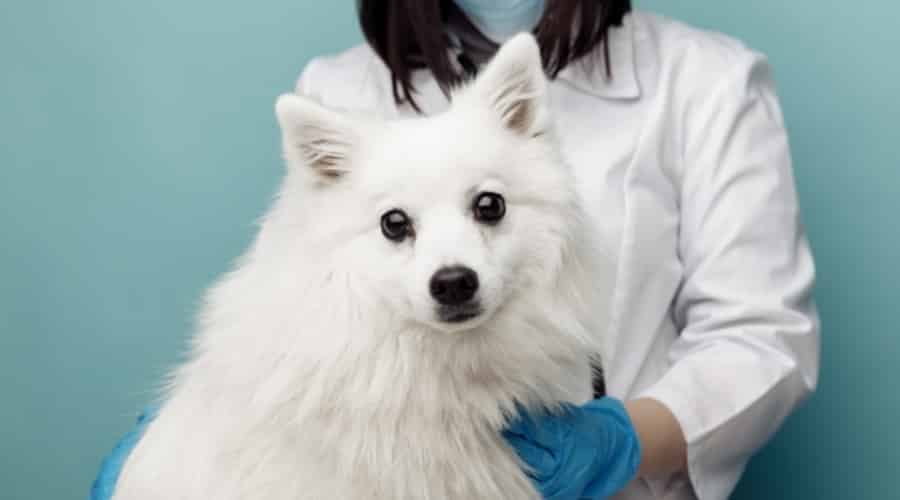
Did you just come home to find your dog has dug around in the garden and unearthed some of your bulbs? Or, perhaps Fido just raided the stash of bulbs you were planning on planting later this week? Maybe you walked in on your dog eating some of the flowers, stems, and leaves of your lovely plants? So now what? There are a few steps you can take immediately. Let’s go through them now.
Step 1: Rinse out your dog’s mouth.
If he allows it, try to help your dog by rinsing out his mouth. This will probably be easiest if he is willing to drink some water. You could entice him by mixing it with a little bit of chicken broth or yogurt, if you know he normally likes this. Or perhaps he enjoys trying to catch water from the garden hose? The idea here is to try and gently get the remaining chemicals out of his mouth by rinsing and diluting if he will allow it.
Step 2: Check Your Dog’s Mouth
Check his mouth, if he will let you, for any redness or sores around the corner of the lips, the gums, the tongue, and roof of the mouth. Do not insist if this seems sore or if he is fighting you.
Step 3: Examine What Was Eaten
Looking at your garden, try to figure out whether he has only chewed on some of the flowers and leaves or whether he has managed to eat any of the bulbs.
Step 4: Call Your Veterinarian
Call your veterinarian to talk through any symptoms your pup is showing. Mild cases, will often only result in an upset stomach and drooling. This happens when your dog has only on a few leaves or flowers. Your vet may simply recommend you monitor at home. But if Fido has eaten a large amount, or shows other symptoms, you’ll likely need to see your veterinarian right away.
Step 5: Follow Your Vet’s Guidance
This last point is important: do not try to make him vomit without speaking to your vet first. It’s actually very rare that a vet would ever recommend you try to make your pup sick at home. This is because hydrogen peroxide causes further irritation and sometimes damage to the lining of the stomach and the esophagus. While you may think it’s helping, it can actually make matters worse.
Other than in rare exceptions, it is almost always safer to induce vomiting at the vet clinic. And in this particular instance, if your dog ate a substantial amount of hyacinth bulbs, he may already be vomiting. This means trying to make him vomit more at home is not necessary and, could be potentially harmful.
Dog Hyacinth Poisoning: Treatment
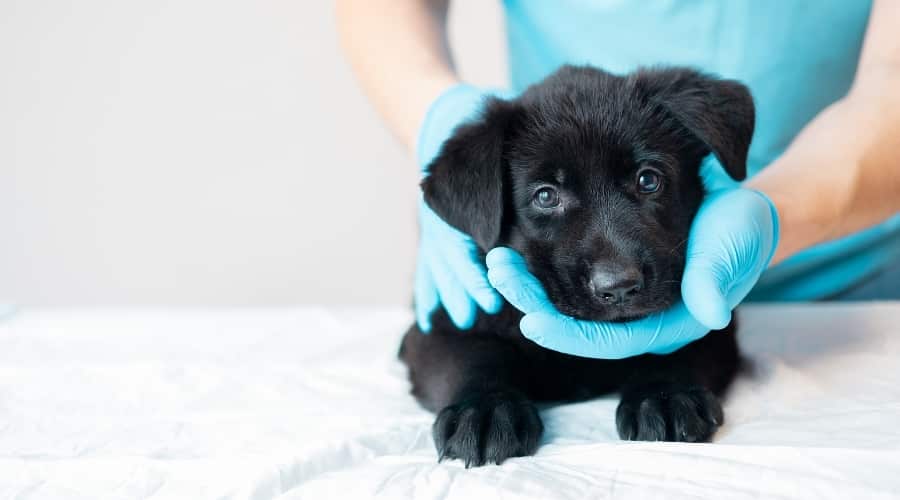
The main steps of treatment for most cases of hyacinth poisoning are decontamination and supportive care. This means trying to get rid of as many of the residual chemicals as possible (usually by rinsing the mouth) and then addressing the other symptoms the dog might be displaying. Here are some of the ways your vet will address these symptoms.
- Pain & Discomfort: Your vet may prescribe medication to help with pain.
- Dehydration: Your vet may treat dehydration with an IV.
- Nausea: Your vet will treat your pup with anti-nausea medication if needed.
- Stomach Upset: A bland diet using rice, and chicken will be recommended.
Please keep in mind, the treatment of your pup will vary based on the severity of their symptoms. If you suspect your canine companion ate a fairly large amount of bulbs, or ate some bulbs a few days ago and is now vomiting or refusing to eat after initially being fine, your vet might want to take some X-rays. This will help identify if any of the bulbs have gotten stuck in his intestines.
In very severe cases of hyacinth poisoning, some dogs will need to stay in the hospital to monitor their heart rate and blood pressure. Your pup also might need to be given medication to help normalize his heartbeat. This is thankfully very rarely needed. It’s extremely uncommon for a dog to eat enough plant material to get this sick.
Will My Dog Be OK if He Ate Hyacinth?
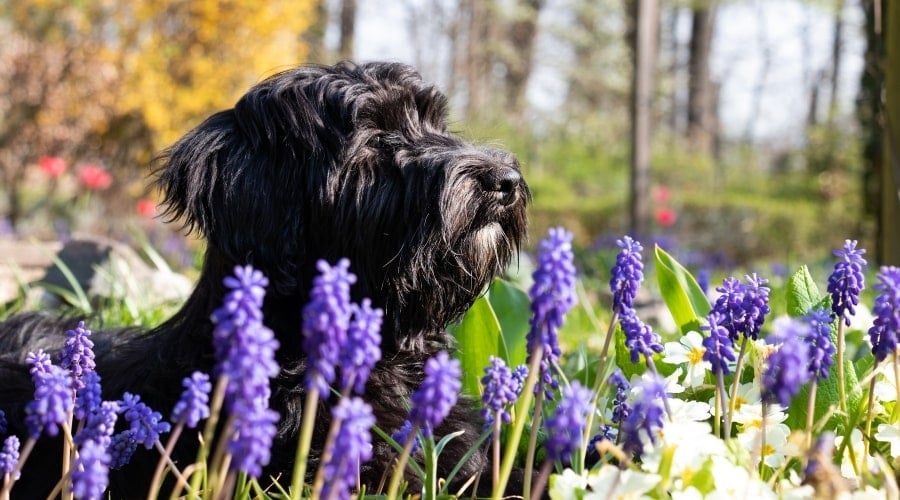
The majority of dogs that eat hyacinths will be fine, even if they need a bit of supportive care along the way to help them feel better faster. But if they have eaten a large amount, especially bulbs, then there can be some truly serious issues.
The outcome is similar to other bulb plants (tulips and daffodils in particular). Even in this instance though, with adequate medical care and time, most dogs will fully recover. Reacting quickly is important, as is making sure you know how much has been consumed.
Can Eating Hyacinth Kill a Dog?
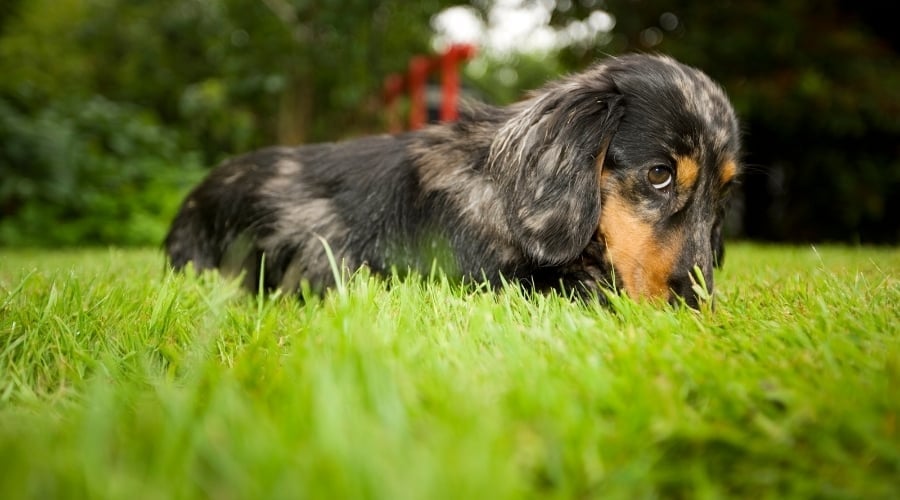
The short answer is “technically yes,” a dog could die if he eats a very large amount of bulbs and does not receive adequate supportive care in time. There is also the scenario where a large piece of hyacinth bulb could get stuck inside a dog’s intestines a few days after eating it. This means he would need major surgery to get it out.
Thankfully, both of these instances are extremely rare. Most dogs will be fine, with a bit of supportive care, after digging out and chewing on a hyacinth bulb or eating some of the flowers.
Preventing Hyacinth Ingestion
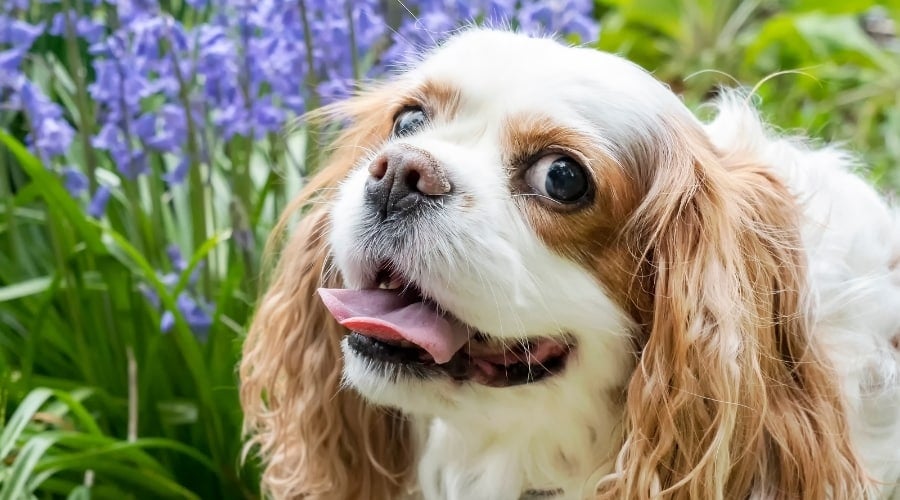
The most dangerous scenario for a dog is to have easy access to several hyacinth bulbs at once. This is most likely to be in early autumn when there could be a stash of bulbs put aside and ready to be planted. Especially if you know your dog is curious, playful, and a bit greedy.
It’s best to keep him away from the entire area altogether and to keep the bulbs safely stored until they are ready to go into the ground. If you know your pup is a digger, it might be best to limit the amount of time he is unsupervised in the garden.
You can also fence up the areas containing the buried treasures so they are safely out of reach. If this option is not possible, and you are coming home regularly to a new episode of “digging drama,” it might be best to consider not using these sorts of plants in your garden. Instead, stick to canine-friendly flowers like Lilacs, or roses instead.
Frequently Asked Questions
Is water hyacinth poisonous to animals?
Despite what their name suggests, water hyacinths are aquatic weeds and are from a different plant family than regular hyacinths. They are not toxic to dogs or other animals. The same goes for grape hyacinths, which are not toxic to dogs either.
Are spring bulbs poisonous to dogs?
Yes, sadly, most of our beautiful spring bulbs are toxic for dogs to some degree. In addition to hyacinths, common spring bulbs such as tulips, crocuses, irises, lilies, bluebells, begonias, dahlias, and daffodils can cause similar issues when chewed.
Daffodils are even more likely to cause heart and neurological problems when eaten, and crocuses can cause liver and kidney problems and seizures. It is also worth mentioning that while lilies are moderately toxic to dogs when chewed on, they are extremely toxic to cats, who are exquisitely sensitive to them.
Final Thoughts
Hyacinths are a beautiful and colorful addition to any garden, but they can be a hazard for curious dogs, especially diggers. While the entire plant is technically toxic, the bulbs are by far the most dangerous. The bulbs should be kept away from dogs, especially during planting in the early fall.
If your dog has eaten a hyacinth bulb at home or is showing symptoms after chewing on the plant itself, call your veterinarian right away to get further advice, and do not try to make him vomit at home as it can make things worse.
